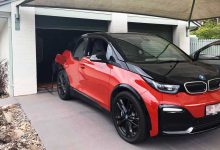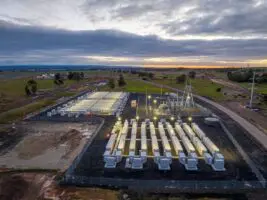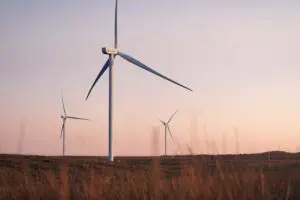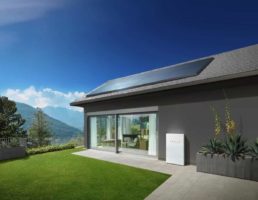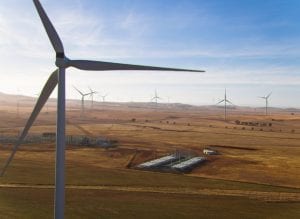The Energy Security Board’s (ESB’s) final post-2025 market design advice to Energy Ministers has been very controversial.
First there was the unnecessary proposal for a capacity payment paid by electricity consumers to power stations – not just for the electricity they generate, but also for the size of capacity installed in the plant, irrespective of how often it might be needed.
The ESB’s transmission congestion management model (called #solarstopper by its opponents) has also caused controversy.
Further disappointment can be found in the ESB’s three recommendations for the integration of Distributed Energy Resources (DER), such as rooftop PV, smart appliances and electric vehicles into Australia’s national electricity market.
The ESB’s final DER advice is unsatisfying, revealing scant progress has been made since the ESB published its DER Integration Roadmap a year ago.
Indeed, the ESB’s new DER Implementation Plan is largely identical to the Roadmap.
To achieve this sameness, ESB spent much of the last year in a so-called ‘Maturity Plan process’ comprising hundreds of hours of stakeholder workshops, a process the ESB is proposing to continue for another three years.
Many stakeholders ended up frustrated with the workshops because they collected a few facts and many opinions, but produced no new tangible insights or progress on DER integration.
Technical, regulatory and market-design issues cannot be addressed using these types of stakeholder workshops as the primary activity.
Such post-it note workshops create the danger of prioritising opinion and emotion over expert quantitative and qualitative analysis, the foundation for policy and regulation.
I am not against consultation, but for rigorous evidence-based public policy making that uses consultation appropriately.
The ESB’s Maturity Plan approach failed and should not be continued. Instead, the issues proposed to be examined by the Plan should be progressed through existing energy market institutions – the Australian Energy Market Commission (AEMC) and the Australian Energy Market Operator (AEMO).
Where consultation and collaboration is best conducted outside these institutions, the Distributed Energy Integration Program (DEIP), a collaborative process facilitated by the Australian Renewable Energy Agency (ARENA) provides a well-established means of doing so.
For the DER Integration Plan (ESB’s recommendation 7) to be implemented, both AEMO and the AEMC need significant additional resources.
There are only a few staff at these organisations devoted to DER and more resources are needed to speed up actions such as the development of a minimum system load mechanism and other ways in which consumers could be paid for demand management—turning up and turning down appliances to match variable renewable supply.
Despite AEMO announcing it will develop a Minimum System Load mechanism, the ESB’s 8threcommendation is for Energy Ministers to ‘adopt a jurisdictional Ministerial lever for emergency backstop measures, as an immediate reform’.
IEEFA’s previous critique of household solar cut-offs in South Australia sets out why this is unjustified and should be rejected by Energy Ministers due to the lack of analysis or trials of alternative measures, the lack of cost-benefit analysis of backstops, and the lack of social licence for solar cut-offs.
Instead, Ministers should consider agreeing to legislate ‘a demand response capability’ requirement for priority household appliances under the under the Commonwealth Greenhouse and Energy Minimum Standards (GEMS) Act 2012.
This would be a foundation action to support household appliances assisting in soaking up abundant solar electricity production in the middle of the day.
Without this smart demand response capability, households’ ability to participate in wholesale markets, Frequency Control Ancillary Services (FCAS), or future demand-response or two-sided markets will likely be limited to inverter-connected devices.
The ESB’s 9th recommendation notes the consumer protection risk assessment tool already developed by the AEMC. Again, nothing new here.
Energy Ministers must go further and task the AEMC with conducting a comprehensive review of the National Energy Consumer Framework (NECF) given so much household electricity supply is already coming from rooftop solar and this proportion will only continue to increase.
The definition of what is an essential service and how it is regulated needs a thorough review and rethink. Consumers who have invested in Australia’s rooftop solar revolution and who are or will soon be investing in electric vehicles and other DER appliances deserve this.
DER has changed the nature of operating a distribution network (the local poles and wires and substations). A comprehensive review of distribution network revenue regulation is also overdue, including looking at the potential for performance-based regulation.
The current CPI-X network revenue regulation model was developed for steadily increasing demand growth and one-way flows of electricity. Now we have millions of distributed rooftop solar systems, some smart appliances and growing numbers of batteries and electric vehicles (EVs).
Australia needs to go back to first principles and consider rewarding distribution networks for their performance, not just their expenditure.
The ESB has substantially failed Ministers in its lack of progress on DER integration over the last year and in its final advice supporting capacity payments and congestion management models. These ESB proposals are now coming under strong opposition from the renewable energy industry and some consumer organisations.
It’s time for the heads of AEMO and AEMC to step back from the flawed parts of the ESB’s advice and plan for a 100% renewable future where distributed energy resources are given equivalent priority to large-scale resources.
With up to three-quarters of daytime supply already coming from rooftop solar at some times in some places and EVs now starting to taking off in Australia, it’s time to think big about small-scale DER.
Author: Dr Gabrielle Kuiper, DER specialist and IEEFA guest contributor

